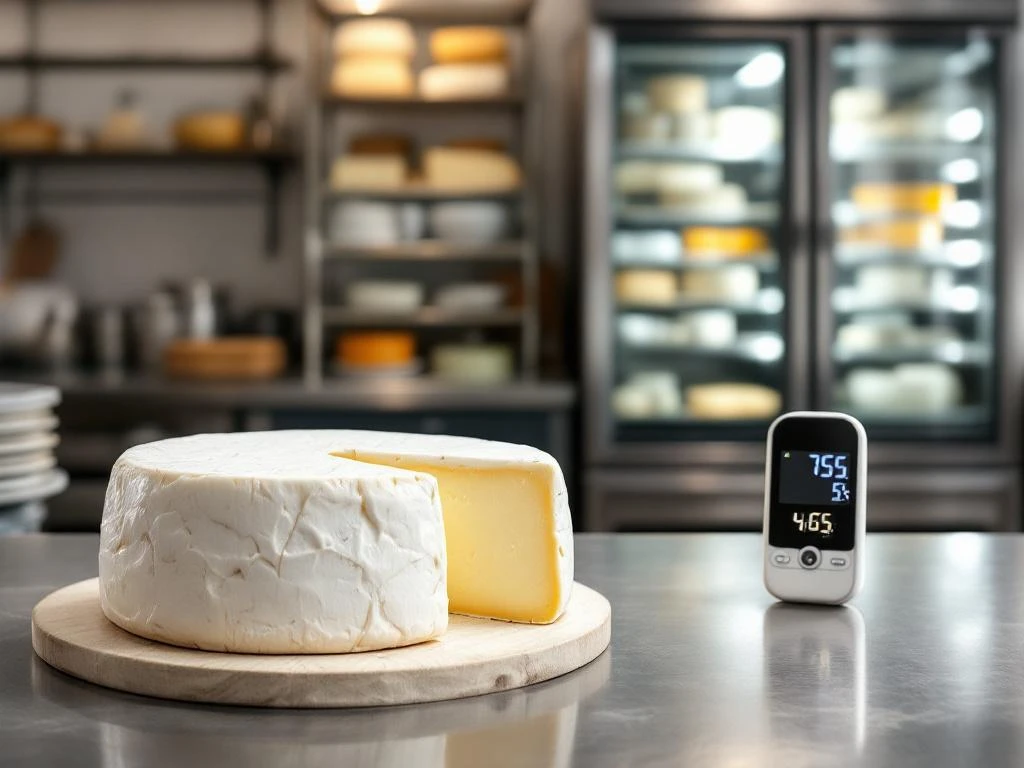The shelf life of goat cheese in foodservice varies significantly based on the type and storage conditions. Fresh goat cheese typically lasts 7-14 days when properly refrigerated at 35-40°F, while aged varieties can maintain quality for several months. Proper storage practices and understanding spoilage indicators are crucial for foodservice operations to ensure both food safety and optimal flavour profiles when serving this versatile cheese.
What determines goat cheese shelf life in professional kitchens?
Several critical factors influence how long goat cheese remains fresh in foodservice environments. The type of cheese, whether fresh or aged, plays the most significant role, with moisture content directly affecting preservation timeframes. Fresh varieties contain higher moisture levels, making them more perishable than their aged counterparts.
Packaging methods substantially impact longevity. Vacuum-sealed products maintain freshness longer by limiting oxygen exposure, while cheese wrapped in breathable materials requires more careful monitoring. Temperature control remains paramount, with consistent refrigeration between 35-40°F essential for preventing bacterial growth and maintaining texture.
Production methods also affect shelf life. Traditional artisanal cheeses often have shorter preservation windows due to natural cultures and minimal preservatives. The pH level of the cheese influences its resistance to spoilage, with lower pH levels generally providing better protection against harmful bacteria. Handling practices in professional kitchens, including proper sanitation and minimal temperature fluctuations during service, ultimately determine whether goat cheese reaches its maximum potential shelf life.
How long can different goat cheese varieties last in foodservice storage?
Fresh chèvre, the most delicate variety, maintains optimal quality for 7-14 days when refrigerated properly. This soft, spreadable cheese requires immediate attention once opened, with quality declining rapidly after the seal is broken. Semi-soft varieties offer more flexibility, lasting 3-4 weeks under proper conditions.
Aged hard goat cheeses demonstrate remarkable longevity, often maintaining quality for several months when stored correctly. These varieties benefit from lower moisture content and natural rind development, creating protective barriers against contamination. Vacuum-sealed products across all categories typically add an extra week or two to standard shelf life expectations.
| Cheese Type | Unopened Shelf Life | After Opening | Storage Temperature |
|---|---|---|---|
| Fresh Chèvre | 2-3 weeks | 7-14 days | 35-40°F |
| Semi-soft | 4-6 weeks | 3-4 weeks | 35-40°F |
| Aged Hard | 3-6 months | 6-8 weeks | 35-45°F |
| Vacuum-sealed | Add 1-2 weeks | Standard times | 35-40°F |
Humidity control proves equally important, with ideal levels between 80-85% preventing excessive drying while discouraging mould growth. Professional kitchens must balance these requirements with practical considerations, ensuring cheese remains accessible for service while maintaining optimal storage conditions. For those seeking comprehensive solutions for their foodservice needs, you can explore specialized goat cheese options for the industry and wholesale market.
What does goat cheese taste like when it’s past its prime?
Spoiled goat cheese develops distinct flavour changes that foodservice professionals must recognise immediately. The characteristic mild, creamy, and slightly tart profile transforms into overly sour or ammonia-like tastes that indicate bacterial breakdown. These off-flavours become particularly pronounced in fresh varieties, where spoilage occurs more rapidly.
Texture alterations accompany flavour deterioration. Fresh goat cheese should maintain a smooth, creamy consistency, but spoiled cheese becomes grainy, watery, or develops an unusual sliminess. Visual cues include excessive liquid separation, discolouration beyond natural aging, or mould growth in unexpected areas.
Bitter notes replacing the pleasant tanginess signal advanced spoilage, making the cheese unsuitable for service. The natural earthy undertones of quality goat cheese transform into unpleasant, sharp flavours that overwhelm dishes rather than complement them. Professional kitchens must train staff to identify these changes before plating, as serving compromised cheese risks both customer satisfaction and food safety standards.
How should foodservice operations store goat cheese for maximum freshness?
Proper storage begins with maintaining original packaging until use, as manufacturers design these materials to optimise preservation. Once opened, wrapping techniques become crucial, with parchment paper followed by loose plastic wrap allowing cheese to breathe while preventing contamination. Airtight containers work well for crumbled varieties but can trap moisture with whole pieces.
Refrigerator placement requires strategic thinking. Store goat cheese away from strong-smelling ingredients like onions or fish, as it readily absorbs surrounding odours. The cheese drawer or a dedicated dairy section maintains more consistent temperatures than door storage, which experiences frequent fluctuations.
Different formats demand specific approaches:
- Logs: Wrap cut surfaces tightly, store horizontally
- Crumbles: Transfer to airtight containers with minimal headspace
- Wheels: Keep in original packaging or cheese paper
- Spreads: Ensure lids seal completely, stir before each use
Implementing a FIFO (First In, First Out) rotation system prevents older products from languishing behind newer deliveries. Clear date labelling, including both receipt and opening dates, enables kitchen staff to make informed decisions about usage priorities and quality assessment.
What are the key takeaways for managing goat cheese shelf life in foodservice?
Successful goat cheese management in professional settings requires systematic approaches to storage and handling. Maintaining an unbroken cold chain from delivery through service prevents quality degradation and extends usable life. Temperature logs and regular monitoring ensure refrigeration equipment performs consistently.
Date labelling systems must include arrival dates, opening dates, and use-by recommendations based on cheese type. Digital inventory management helps track these dates automatically, reducing human error and waste. Staff training on recognising quality indicators empowers team members to make confident decisions about cheese usability.
Establishing proper inventory turnover protocols balances having sufficient stock for service needs while avoiding excessive aging. Order frequencies should align with menu usage patterns and storage capabilities. Regular quality checks during prep enable early detection of any issues before they impact service.
The investment in proper storage and handling practices pays dividends through reduced waste, consistent quality, and the ability to showcase goat cheese at its finest. By following these guidelines, foodservice operations can confidently feature this versatile ingredient, knowing they’re delivering the distinctive taste profiles that make goat cheese a valuable menu component while maintaining the highest food safety standards.
